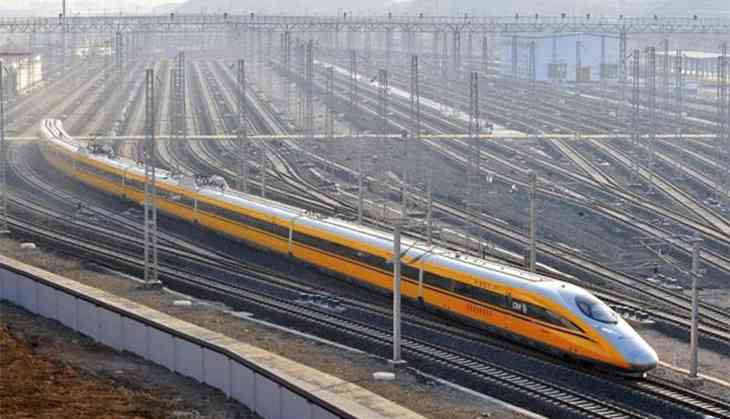
In a day that could turn out to be a historical day for the Indian Railways, Japanese Prime Minister Shinzo Abe along with Prime Minister Narendra Modi laid the foundation stone for the proposed Ahmedabad-Mumbai High-Speed Rail Network, known as the bullet train on 14 September.
PM Modi said that 'friend' Japan gave India a loan worth Rs. 88,000 crore at 0.1 per cent interest.
PM further praised Abe for taking a personal interest in the bullet train project and ensuring that it fructifies into something huge for India.
“If the inauguration for this project is taking place so soon, the credit goes to Shinzo Abe. He took a personal interest to see that this project goes smoothly without any difficulties," Prime Minister Modi said.
“This is a historic and emotional day for India-Japan ties,” he added.
Here are the key points that tells everything about the high speed train:
- The bullet train, which has a capacity to accommodate 750 people, is expected to reduce travel time between the two cities from seven to three hours.
- On the Ahmedabad-Mumbai route, total 12 stations have been proposed that include Mumbai, Thane, Virar, Boisar, Vapi, Bilimora, Surat, Bharuch, Vadodara, Anand, Ahmedabad and Sabarmati.
- The distance of 508 km will be covered in two hours and seven minutes by the bullet train if it stops at four stations namely Ahmedabad, Vadodara, Surat and Mumbai.
- According to the railway ministry officials, the operating speed of the bullet train will be 320 kilometers per hour and the maximum speed will be 350 kilometers per hour.
- This train is based on Japanese high-speed technology called Shinkansen, known for its safety and comfort.
- With this, India has become the first to import the iconic 'Shinkansen' bullet-train technology after Taiwan.
- The Japanese Government has also agreed to fund the project at minimal interest rates.
- The 500-km railway will link Mumbai and Ahmedabad in Western India, with services planned to commence in 2023.
- Estimated to cost around Rs 97,636 crore, 81 per cent of the funding for the project will come by way of the loan from Japan.
- The estimate includes possible cost escalation, interest during construction and import duties. It is a soft loan for 50 years at 0.1 per cent annual interest with a 15-year moratorium.


